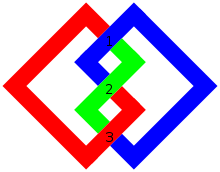This should correspond to 1,2,5 I would think. But there must be knots in which the mirror image is the same, correspond to Boson statistics, and elements of Markov from the Pell numbers. (2,y,z).
The Markov node gives you the minimum resolution needed to 'raise' the planar knot of a given crossing. There should be the equivalent of fermion and boson knots; or even,odd knots.
All of this stuff is connected, from Shannon, to Horwitz, to Markov to Bayesian statistics and combinatorials. And in real physics the crossing points result in collisions and kinetic energy, so the game is to find the resolution that sufficiently reduce collisions, making a closed surface.
The path thinning specified in Markov tells us how many equivalent knot formations may be covered by one path while remaining separated on the surface. But that is how Boltzmann got his result. This is all fundamental stuff, the core essence of self sampled systems.
Lord Kelvin was right. The atom is a knot in the aether.
Thomson suggested that each type of knot might represent an atom of a different chemical element. He further speculated that multiple knots might aggregate into molecules of somewhat lower stability.
He was more right than people think because in fact we have an aether, the finite vacuum element. If we understand the proton as a knot that cannot close then we can get the rest of the periodic table, but we have to deal with unclosed knot failure, not Lord Kelvin failure.

No comments:
Post a Comment